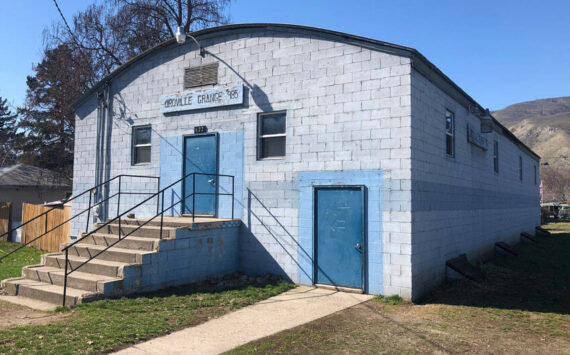OROVILLE – A workshop was held prior to the regular Oroville Council meeting to discuss the various aspects of the city’s Critical Areas ordinance.
Part of the Comprehensive Plan Amendments, the city has been operating under an interim ordinance for several years, renewing with public hearings every six months. Over the past two months Oroville has held public hearings to try and gain final approval for the Critical Areas aspects of the comprehensive plan, a requirement of the state Growth Management Act. However, there has been little to no public participation regarding the ordinance so a workshop was requested by Chris Branch, director of Community Development.
Branch gave an overview and addressed the Wetlands, Fish and Wildlife Habitat Conservation areas and Frequently Flooded Areas aspects of the Critical Areas changes.
“It kind of sounds like the negotiable item is going to be ascertaining habitat values,” said Councilman Ed Neaillon, regarding the ordinance.
“We’ve had these rules in place with more stringent buffers since 2007, we really haven’t had much development in these areas,” said Branch, who adds that the state has defined much of what is considered to be wildlife habitat.
He added that about 90 percent of the wetlands that fall within the urban growth area of Oroville are associated with rivers and streams – the Okanogan and Similkameen rivers and Tonasket and Nine Mile creeks in particular. Branch said there is concern for things like eagles and especially for anadromous fish species, like salmon and steelhead.
“That’s were the focus really is, but we also have whitetail deer habitat that extends down to Veranda Beech where a lobe of that habitat reaches down to the lake. The rest of the habitat is above Eders,” he said.
About the anadromous fish species, Branch said that there are concerns about lower Tonasket Creek because the Colville Confederated Tribes have found salmon in there. There is a 50 foot setback along the riparian area already in place along the creeks, he said.
“They’ve added a piece that we hadn’t added before and that’s the ‘Frequently Flooded Area,'” said Branch. “But we haven’t really added it because it is basically a collection of stories related to past flooding.”
He said that while there is a dike on each side of the creek, until you can pull that dike back a reasonable distance to allow for flooding along the creek, it doesn’t make much of a difference in controlling where the flooding takes place.
“When you’re building a city, and that’s what we’re doing, you’ve got to keep these things in mind. It is going to take a coordinated effort, we can’t just move part of it (the dike) because that would affect others. Eventually we’d like to pull it all back to 50 feet on each side of the stream to make a big corridor to go through,” said Branch.
He that this would give the water places to hold when it overflows its banks, rather than sending it downstream and making it someone else’s problem. While much of the area along the creek goes through agriculture property, the property owner is not required to make any changes like pulling the dike back, unless they change the use and want to develop the land.
“The frequently flooded areas piece might get your attention. It says we don’t allow development in the floodplain anymore. That’s because the more development we have in the floodplain the fewer places we have for flood waters to go. However, if you already have a lot created there is a reasonable use exemption and we have to make it so you can use your lot,” said Branch.
After Branch addressed questions from the council, staff and public, there seemed to be a consensus that there was a better understanding of how the ordinance will work. Final approval is expected soon following a public hearing at a future council meeting.





